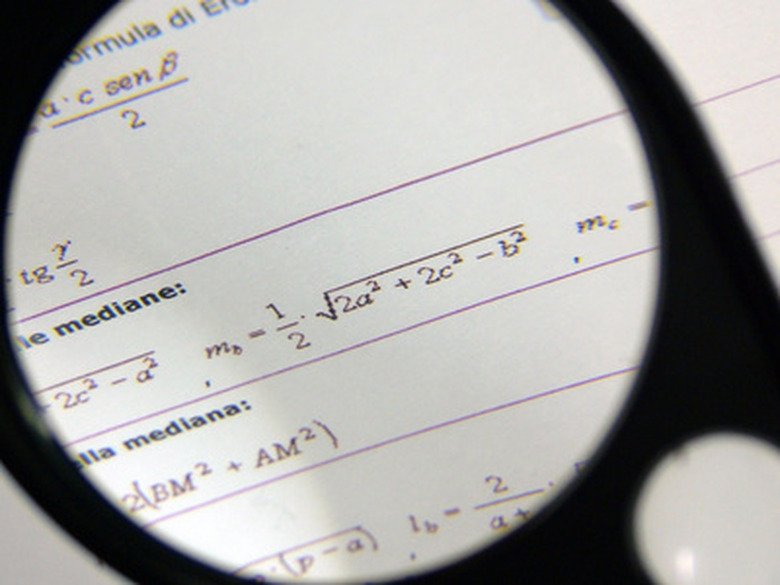How To Factor & Simplify Radical Expressions
Radicals are also known as roots, which are the reverse of exponents. With exponents, you raise a number to a certain power. With roots or radicals, you break down the number. Radical expressions can contain numbers and/or variables. To simplify a radical expression, you must first factor the expression. A radical is simplified when you can not take out any other roots.
Simplifying Radical Expressions With No Variables
Step 1
Identify the parts of a radical expression. The check-mark like symbol is called the "radical" or "root" symbol. The numbers and variables under the symbol are called the "radicand". If there is a small number outside the check mark, that is called the "index". Every root except a square root has an "index". For example, a cubed root would have a small three outside the radical symbol and that three is the "index" of the cubed root.
Step 2
Factor the "radicand" so that at least one factor has a perfect square. A perfect square exists when one number times itself equals the "radicand". For example, with the square root of 200, you could factor it out to the "square root of 100 times the square root of 2". You could also factor it out to "25 times 8", but you would need to take that one step further since you could break "8" into "4 times 2".
Step 3
Figure out the square root of the factor that has a perfect square. In the example, the square root of 100 is 10. The 2 does not have a square root.
Step 4
Rewrite your simplified radical as "10 square root of 2". If the index is a number other than a square root, you have to find that root. For example, the cubed root of 128 is factored out as the "cubed root of 64 times the cubed root of 2". The cubed root of 64 is 4, so your new expression is "4 cubed root of 2".
Simplifying Radical Expressions With Variables
Step 1
Factor out the radicand, including variables. Use the example, the cubed root of "81a^5 b^4."
Step 2
Factor 81 so that one of the factors has a cubed root. At the same time, separate the variables so that they are raised to the third power. The example is now the cubed root of "27a^3 b^3" times the cubed root of "3a^2 b."
Step 3
Figure out the cubed root. In the example, the cubed root of 27 is 3 because 3 times 3 times 3 equals 27. You can also remove the exponents from the first factor because the cubed root of something raised to the third power is one.
Step 4
Rewrite your expression as "3ab" cubed root of "3a^2b."
TL;DR (Too Long; Didn't Read)
Combine any radicals with the same index number by multiplying or dividing. For example, the cubed root of 3 times the cubed root of 2 becomes the cubed root of 6. The square root of 50 over the square root of 5 becomes the square root of 10.
Cite This Article
MLA
Runzel, Tamara. "How To Factor & Simplify Radical Expressions" sciencing.com, https://www.sciencing.com/factor-simplify-radical-expressions-2805/. 24 April 2017.
APA
Runzel, Tamara. (2017, April 24). How To Factor & Simplify Radical Expressions. sciencing.com. Retrieved from https://www.sciencing.com/factor-simplify-radical-expressions-2805/
Chicago
Runzel, Tamara. How To Factor & Simplify Radical Expressions last modified March 24, 2022. https://www.sciencing.com/factor-simplify-radical-expressions-2805/
